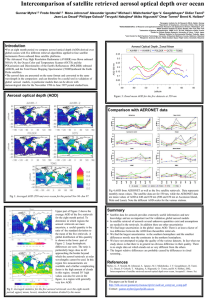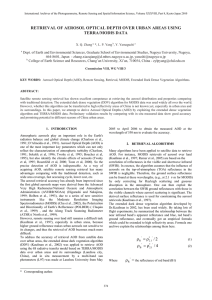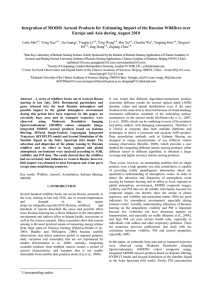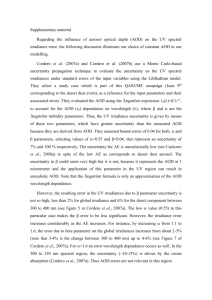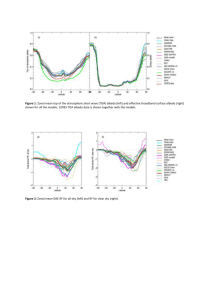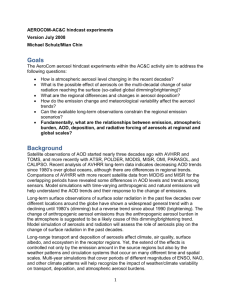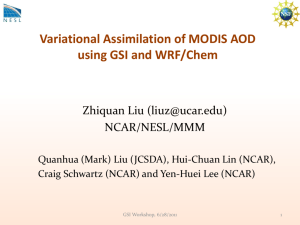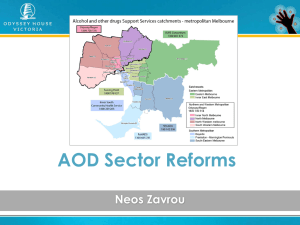Urban aerosol retrieval in MODIS dark target algorithm
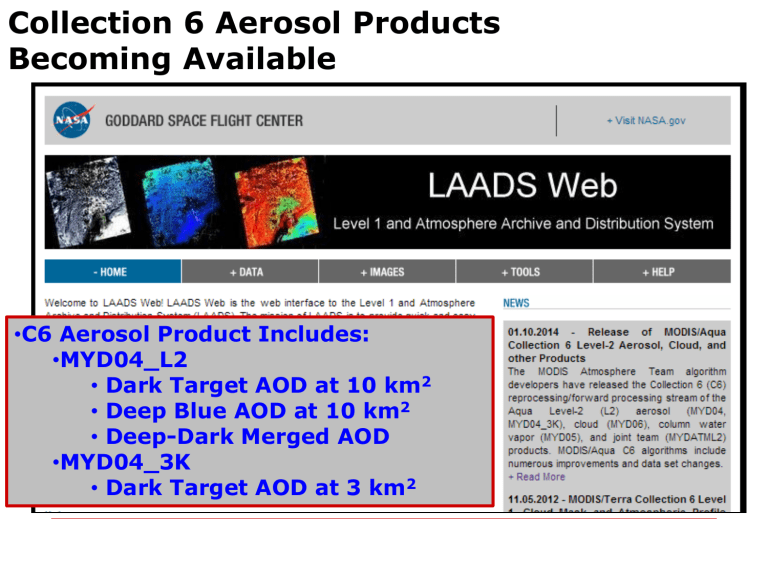
Collection 6 Aerosol Products
Becoming Available
• C6 Aerosol Product Includes:
• MYD04_L2
• Dark Target AOD at 10 km 2
• Deep Blue AOD at 10 km 2
• Deep-Dark Merged AOD
• MYD04_3K
• Dark Target AOD at 3 km 2
Urban Aerosol Retrieval in MODIS
Dark Target Algorithm: Implications to Air Quality Monitoring
Pawan Gupta 1,2 , Rob Levy 2 , Shana Mattoo 2,3 , and Leigh Munchak 2,3
1 GESTAR Universities Space Research Associations
2 NASA Goddard Space Flight Center, Greenbelt, MD, USA
3 SSAI
Air Quality Applied Sciences Team 6th Semi-Annual Meeting (AQAST 6)
January 15-17, 2014
Motivation: Why Urban?
PM2.5 pollution levels in many mega cities exceeds the WHO standards by 5 to 10 times.
Satellite observed aerosol information has been increasingly in use for air quality monitoring efforts at local to regional to global scales.
MODIS Dark Target AOD validation studies have shown a bias over urban areas due to surface assumptions (Oo et al., 2010; Castanho et al., 2007, Munchak et al., 2013, Gupta et al., 2013)
Urban areas comprise 0.5% of the Earth’s surface, but will contain 2/3 of the Earth’s population by 2025, thus addressing urban bias in AOD is critical for obtaining accurate air quality information from space.
City Center Appears as ‘HOT SPOT’ in
MODIS DT AOD
New Delhi, India
Distance (deg)
Gupta et al., 2012
Aerosol and Pollution in Mega Cities
Mega cities appeared as hot-spots in
MODIS AOD images with high gradient from center to outside the city area.
Percent of pixels identified as urban in same 15 km box around AERONET station
Mean bias (MODIS 3 km -
AERONET) averaged over the campaign duration at each
AERONET location
Land identified as urban by MODIS land cover product at 500 m resolution
Munchak et al., 2013
Surface Characterization in MODIS
Dark Target (MDT) Retrieval
• MDT assumes a relationship between the visible (VIS) and shortwave-IR
(SWIR) surface reflectance, based on statistics of dark-target (primarily vegetated) surfaces.
R
VIS
= f (R
SWIR
, Angles, NDVI
SWIR
)
Levy et al., 2007, 2013
Over brighter and more variable surfaces (e.g. urban), the assumed VIS/SWIR relationship breaks down (Oo et al., 2010; Castanho et al., 2007)
Accounting for
Urban Bias
Here, we use MODIS Land surface product (“MOD09”,
Vermote et al.) to derive a new
VIS/SWIR surface relationship for urban areas where urban %
> 20%.
VIS/SWIR ratio versus Urban%
R
VIS
= f (R
SWIR
, Angles, NDVI
SWIR
, Urban%)
Inter-
Comparison with
AERONET
DISCOVER-AQ, Houston
10 km 2
3 km 2
C6 , C6_Urban
Chicago
( 0.41±0.14
, 0.26±0.09
)
Washington DC
( 0.21±0.02
, 0.17±0.01
)
Atlanta
( 0.18±0.04
, 0.15±0.03
)
Spring Time Reduction in AOD over
Urban Regions
Aerosol Retrieval Improvements over Large
Urban Corridors of Eastern USA
Spring 2010
Philadelphia / New York
Aerosol Retrieval Improvements over Large
Urban Corridors of Eastern USA
Spring 2010
Washington DC / Baltimore
Aerosol Retrieval Improvements over Large
Urban Corridors of Eastern USA
Spring 2010
Atlanta
Implication to
Surface PM Air
Quality
Satellite
AOD
Ancillary Data
MODEL
Surface
PM
Driving surface PM from column AOD measurements is challenging problem, having more reliable AOD over urban areas will improve
PM estimation skills of statistical/physical models
Summary
MODIS land surface reflectance and land cover classification data sets have been used to define a VIS/SWIR surface reflectance relationship to be used over urban surfaces (urban percentage > 20%). The standard C6 MODIS Dark-Target surface reflectance relationship was replaced.
Reduced AOD is seen over urban areas. Compared to AERONET observations, these new retrievals remove some of the high bias normally seen over large urban areas.
Ongoing/Future Work
Evaluating the urban surface relationship over global cities, testing over longer time series.
Evaluating Aerosol Models used over Urban Areas in the DTA.
Implementing into the MODIS Dark Target Land algorithm?
Exploring impacts of new AOD retrieval on regional and global studies of air quality, PM2.5 and health

